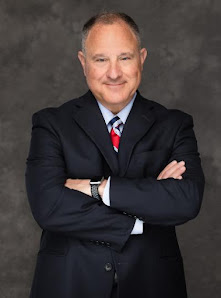CREATORS
August 19, 2025
Those who write about the death penalty often do so from a
certain bias. I wanted to take a crack at writing about the ultimate punishment
without bias. McFarland & Company helped me make that effort a reality.
My book "The Executioner's Toll, 2010" examined
every execution in 2010. One of those executions was that of Cal Coburn Brown.
His perspective on the death penalty was both disturbing and provocative.
Brown was executed by the state of Washington. He had
brutally sexually assaulted, tortured, and murdered a young woman. He left her
body in the trunk of a car at the Seattle-Tacoma Airport.
Brown then jumped on an airplane and went to meet a woman in
Palm Springs, Calif. He was torturing her when she managed to escape and notify
the police.
Brown spent more than 16 years on Washington's Death Row. As
he lay strapped to a gurney awaiting lethal injection, he protested what he
perceived to be the unfairness of his sentence. He complained that criminals
who had killed many more people, such as "Green River killer" Gary
Ridgway, were serving life sentences while he was about to receive the death
penalty.
Ridgway is a serial killer, both diabolical and prolific. He
was convicted of murdering 49 women in the northwest between 1982 and 1998.
Ridgway's victims were women in vulnerable circumstances, including underage
runaways. Ridgway strangled his victims and dumped their bodies in secluded
areas, often returning to the bodies to engage in acts of necrophilia.
In his final words, Cal Brown said, "I only killed one
victim ... I cannot really see that there is true justice. Hopefully, sometime
in the future, that gets straightened out."
There does seem to be some inconsistency in the application
of the death penalty. Let's start with the fact that 23 states don't have the
death penalty, and another 10 that have not carried out an execution in the
last 10 years.
For instance, serial killer Jeffrey Dahmer escaped death at
the hands of the government because Wisconsin had outlawed the death penalty in
1853.
David Berkowitz, the Son of Sam killer, escaped the death
penalty in New York. Berkowitz killed six people in New York City in the 1970s.
He terrorized an entire city, and for that matter, an entire nation.
Berkowitz was not sentenced to death. He pleaded guilty to second-degree
murder; as a result, the death penalty was not an option under New York's
sentencing scheme. It didn't matter — New York had not executed a killer since
1963.
Charles Manson, responsible for ten murders, including the
gruesome murder of pregnant movie star Sharon Tate, was sentenced to death but
never executed. Manson's sentence was commuted to life in prison after the U.S.
Supreme Court declared the imposition of the death penalty arbitrary in 1972.
Those serial killers who didn't escape the executioner
include John Wayne Gracy who murdered 33 women in Texas between 1972 and 1978;
Ted Bundy who murdered as many as 30 women across the country, often sexual
assaulting them and engaging in necrophilia with their dead bodies; the
"Freeway Killer," William Bonin, responsible for 14 killings and the
rare female serial killer Aileen Wuornos who was executed for six murders in
2002.
There seems to be no explanation for sparing the life of the
diabolical modern-day mass killer — Byran Kohberger.
Kohberger was offered a plea bargain to life without parole,
without being required to explain his motive for killing four young college
students in Idaho. It is not as though Idaho doesn't have, or use, the death
penalty. Just this year, the state adopted the firing squad as its primary form
of execution.
To further complicate matters, the evidence against
Kohberger was overwhelming. He had recently purchased a KA-BAR knife — the
alleged murder weapon. His DNA was on the knife sheath. He was observed on
video surveillance near the victims' apartment. Kohberger's cellphone put him
in the vicinity of the murders. Even more surprising, no mitigating evidence
was presented by his lawyers.
Kohberger dodging the death penalty supports, yet again,
that the death penalty has become arbitrary and capricious.
Matthew T. Mangino is of counsel with Luxenberg, Garbett, Kelly & George P.C. His book The Executioner's Toll, 2010, was released by McFarland Publishing. You can reach him at www.mattmangino.com and follow him on Twitter @MatthewTMangino
To visit Creators CLICK HERE








No comments:
Post a Comment